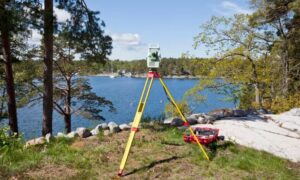
If you’re planning to buy or build property near Salt Lake City, there’s a new rule you should know about. The Utah Supreme Court’s recent West Hills ruling—decided on November 6—just changed how city boundaries are set. For surveyors, lenders, and developers, that change could mean one thing: your next ALTA Title Survey might take more time and effort than before.
A Court Decision That Changed More Than a Map
The West Hills case started as a local argument about whether an area west of Salt Lake County could form its own city. It sounded simple, but it raised a big question: when do city limits officially take effect, and who decides where those lines go?
The court said that once certain legal steps are missed, landowners can’t fight the boundary later. Once a city or annexation is approved and recorded, it’s final—even if someone disagrees.
That might seem like legal talk, but it matters for anyone dealing with land. If a surveyor or title company checks the wrong city’s records, your ALTA Title Survey could end up with wrong data. And that can cause real trouble when you’re trying to close on a property or get a loan approved.
Why It Matters to Buyers and Builders
An ALTA Title Survey is the top-level map used in real estate. It confirms your exact property lines, easements, and legal description before you close on a deal. Lenders and title companies depend on it because it follows strict national rules from the American Land Title Association.
Normally, these surveys focus on what’s on the land—corners, fences, and improvements. But now, after the West Hills ruling, surveyors also need to check which local government actually controls the property.
If they look in the wrong place—for example, checking county records when your land was just annexed into a nearby city—the survey could show outdated information. That can hold up permits, delay closings, and create confusion about who regulates your property.
How the Ruling Complicates the Process

Picture this: you’re building near the border of a growing city. You hire a surveyor for an ALTA Title Survey, and everything seems fine. But halfway through, the title company finds that your property was annexed into a city, not the county.
Now your surveyor has to stop, confirm the correct city, and pull new plats and records. That means more time, more paperwork, and possibly more cost.
This kind of mix-up is becoming more common. Along the Wasatch Front, city limits are growing fast. What was unincorporated land last year could now be part of a city. Since the court made those new lines legally stronger, surveyors must double-check who governs the land before finalizing any ALTA Title Survey.
What It Means Around Salt Lake City
In the Salt Lake Valley, boundaries decide more than property lines—they control permits, taxes, and utilities. If your land sits just outside city limits, you deal with county rules. But if it’s inside an annexed area, you follow city codes instead.
This difference matters when applying for loans. Banks want ALTA Title Surveys that match the right governing body. If your survey lists “Salt Lake County” but the land now belongs to a city, the title insurer may ask for corrections. That can delay your loan and closing.
Even homeowners might feel the effect. Suppose your land was annexed last year and you need a new survey to refinance. Your old record might still show the county’s plat, not the city’s. If your lender catches that, you’ll need an update before they approve anything.
How Surveyors Are Adjusting
Surveyors are now spending more time checking who governs the boundary before going to the field. They review city and county maps, annexation files, and public records.
Before this ruling, surveyors mainly focused on physical evidence and recorded plats. Now they also confirm which city or county has legal control over the land.
This step protects both you and them. It keeps your project aligned with the right permits and prevents problems later. For developers, that means smoother approvals and fewer last-minute surprises with the title company.
How You Can Stay Ahead
If your property is near city borders, a few simple steps can save you time later.
First, confirm who governs your land. You can check local maps or call the building department. A quick look can show if your land is inside or outside city limits.
Next, share that information with your surveyor and title officer. It helps them start with the right records.
Also, plan extra time for your survey. If your property is in an area with recent annexations, surveyors may need more time to verify everything.
Finally, work with local experts. A licensed surveyor who will understand how fast the lines are changing—and where to find the most recent records.
Why This Matters Right Now
The West Hills decision might sound like a court story, but it’s really about protecting your project from confusion. Boundaries define who’s in charge—whether it’s permits, taxes, or development rules.
For growing cities, that means getting your survey right is more important than ever. A complete and accurate ALTA Title Survey doesn’t just show lines on paper—it gives you proof that your property matches the legal record. That keeps deals moving and lenders confident.
Final Thoughts
The Utah Supreme Court didn’t mean to make things harder for property owners. But by confirming how and when boundaries become official, it changed how surveyors must verify land details.
Before you start your next project or loan process, ask one simple question: “Has my surveyor confirmed the latest city or county jurisdiction for my property?”
That small step could save you from costly delays and make sure your ALTA Title Survey reflects the true, current boundary of your land.





